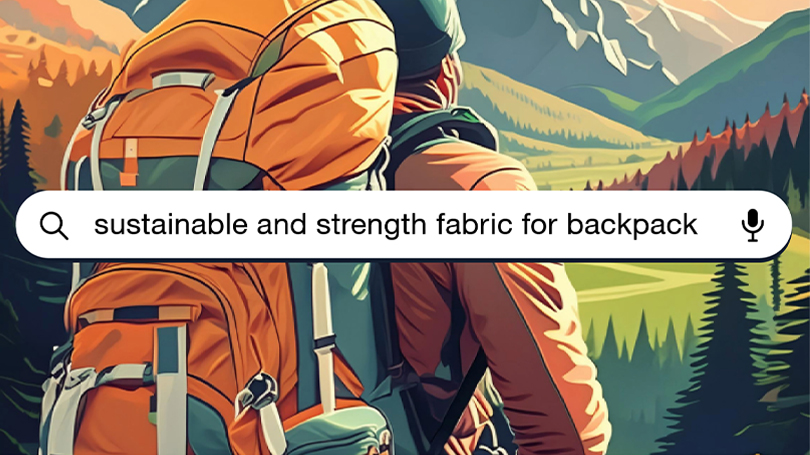2024.06.27Sustainable Strength Fabric: The Best Fabrics for Backpacks

Introduction
In today's eco-conscious world, sports brands are increasingly seeking backpack fabrics that not only offer durability and strength but also align with sustainability principles. This article explores the best sustainable fabrics for modern backpacks, highlighting their environmental benefits and robust performance.
Understanding Sustainable Fabrics
What Makes a Fabric Sustainable?
Sustainable fabrics are defined by their minimal environmental impact throughout their lifecycle. This involves careful consideration of the following aspects:
-
Environmental Impact
Lifecycle analysis: Evaluating the environmental effects of a fabric from production to disposal ensures its sustainability. This analysis covers raw material extraction, manufacturing processes, transportation, usage, and end-of-life management.
Carbon footprint reduction: Sustainable fabrics aim to lower greenhouse gas emissions by utilizing eco-friendly production methods and materials.
Water and energy conservation: Efficient use of water and energy during the manufacturing process is crucial for sustainability, reducing overall resource consumption.
Types of Sustainable Fabrics
Sustainable fabrics come in various forms, each offering unique benefits:
-
Recycled Fabrics
Polyester from Post-Industrial Waste: Repurposing waste materials from textile production reduces reliance on virgin resources. By converting leftover polyester from manufacturing processes into new fabric, this practice minimizes waste and conserves raw materials and energy. This recycling approach also helps decrease the overall environmental impact associated with the textile industry.
Nylon from Post-Consumer Waste: Recycling nylon from discarded fishing nets decreases landfill and sea waste. By reclaiming and repurposing these materials, this method diverts waste from landfills and conserves resources and energy. Utilizing recycled nylon helps reduce the demand for new raw materials, contributing to a more sustainable production cycle and lessening the adverse effects of nylon manufacturing on the environment.
-
Dope Dyed (Solution Dyed) Fabrics
Dope Dyed Polyester and Nylon: Dope dyeing, also known as solution dyeing, involves adding color to the polymer solution before it is extruded into fibers. This process not only produces vibrant, long-lasting colors but also significantly reduces water and chemical usage compared to traditional dyeing methods. By eliminating the need for additional dye baths, dope dyed fabrics minimize environmental pollution and resource consumption, making them a highly sustainable choice for backpack materials.
| ★ NüPalette HT 400D | ★ NüPalette HT 500D |
< Learn more about our Dope Dyed & High Tenacity fabric selection >
- Mono-Material Fabrics
Mono-material fabrics are textiles made entirely from a single type of fiber or polymer. This uniform composition simplifies recycling processes, as there's no need to separate different materials. Commonly used in sustainable fashion and product design, mono-material fabrics can be easily broken down and repurposed at the end of their lifecycle, reducing waste and promoting a circular economy in textile production.
(Recycled) Nylon combined with Nylon Film: Provides excellent strength and abrasion resistance, ideal for backpack use.
| ★ Uni-Nylon |
< Dive deep into our Mono-Material fabrics >
The Best Sustainable & Strength Fabrics for Backpacks
Recycled Polyester
- Strength and Durability
Recycled polyester is known for its robust performance, comparable to virgin polyester. It offers excellent resistance to stretching and shrinking, ensuring long-lasting use in backpacks.
- Environmental Benefits
By utilizing recycled polyester, manufacturers can significantly reduce plastic waste and lower energy consumption during production. This material not only supports a circular economy but also helps mitigate environmental pollution.
Recycled Nylon
- Performance Characteristics
Recycled nylon boasts high tensile strength and superior abrasion resistance, making it an ideal choice for durable backpacks.
- Eco-Friendly Aspects
This material is derived from industrial waste, effectively reducing reliance on fossil fuels and promoting a more sustainable production cycle. By incorporating recycled nylon, brands contribute to waste reduction and resource efficiency.
Benefits of Using Sustainable & Strength Fabrics
Economic Benefits
- Cost Efficiency Over Time
Sustainable and strength materials often offer greater longevity compared to conventional options. This durability translates to lower replacement costs, providing long-term economic benefits for both manufacturers and consumers.
- Consumer Demand
There is a growing preference among consumers for eco-friendly products. Utilizing sustainable fabrics enhances brand reputation and loyalty, attracting environmentally conscious customers and meeting market demand.
Social Responsibility
- Ethical Production
Sustainable fabric production often involves fair labor practices and support for local communities. Ethical production processes ensure that workers are treated fairly, contributing to positive social impact.
Positive Brand Image
Commitment to sustainability reflects positively on a brand's image. Corporate social responsibility (CSR) initiatives that prioritize environmental and social considerations can significantly enhance a brand's reputation and consumer trust.
Conclusion
The adoption of sustainable backpack fabrics is not just a trend but a necessary step towards a more sustainable future. By understanding the benefits and characteristics of these materials, brands can make informed decisions that align with their values and meet the expectations of today's discerning consumers.
Use our online service tool, VIRTUAL MOCK-UP, to understand the environmental impact of the fabrics you use and gain valuable insights into fabric sustainability in simple steps.